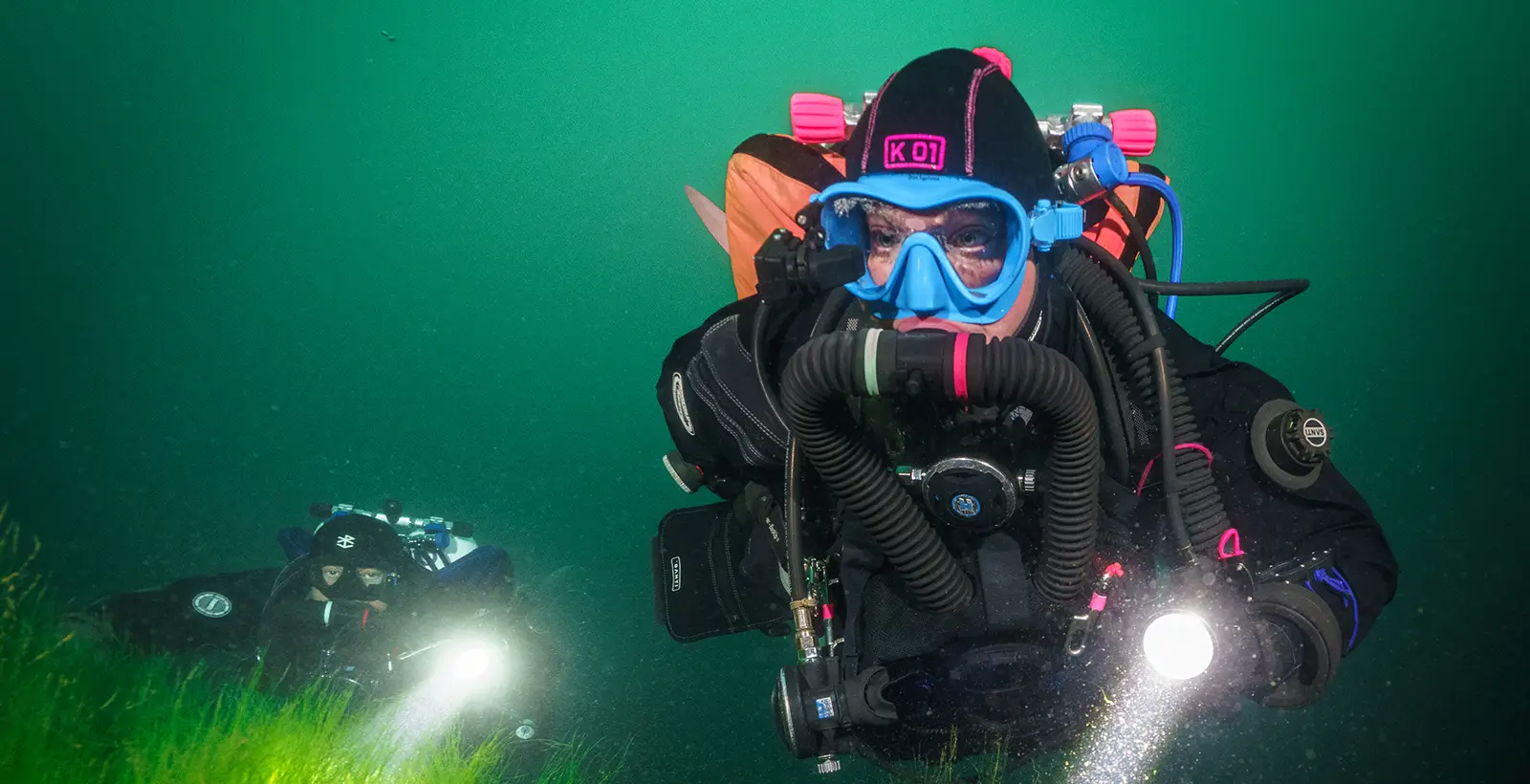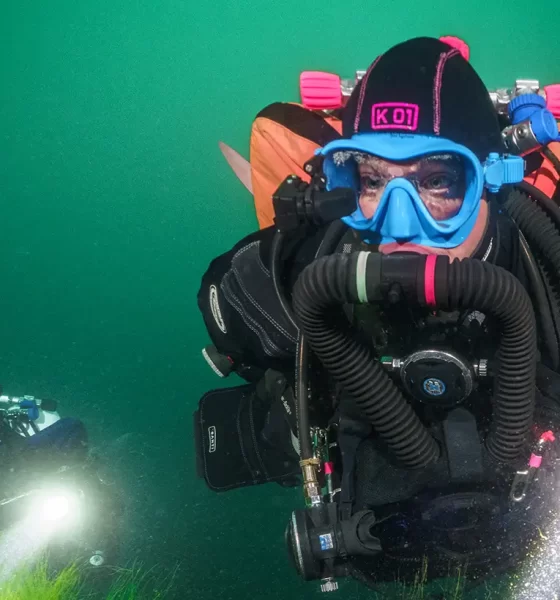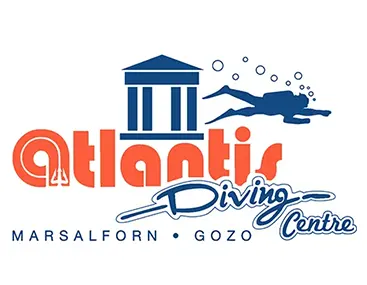

Equipment
Cutting the Wires on Halcyon’s new Chestmount Rebreather
Halcyon Manufacturing is close to rolling out its innovative new chest mount closed circuit rebreather (CCR), which will be on display at the annual DEMA diving trade show this month. Tech and cave instructor John Kendall, who has been working with the new unit, and helped steer it to launch, dives into the details.
By John Kendall. Photos courtesy of the author unless noted. Lead image: Divers using the Symbios by Julian Mühlenhaus.
Ever since Halcyon Manufacturing first came on the scene, they have been enabling divers with novel tools to enrich their diving adventures. Halcyon’s unique PVR-BASC (passive, variable-ratio, biased addition), aka “The Fridge,” semi-closed rebreather first built in 1994, was a vital element of the company’s early history. This distinctive semi-closed-circuit rebreather has allowed countless adventurous divers to travel many thousands of kilometers into the longest and deepest caves on our watery planet.

Subsequent iterations—the RB80 and RB-K —served to refine the pioneering concepts that the early units had realized. Halcyon rebreathers, given their robust construction and reliable operation, have been and continue to be at the forefront of exploration projects as both primary and bailout/redundant units for divers worldwide.
Historically, Halcyon divers and principals have been using both semi-closed and fully closed rebreathers per the demands of a given dive. These many projects revealed the value of a flexible rebreather configuration. Halcyon first began using the RB80 as both a backmount and a staged sidemount rebreather in the early 2000s, a practice that evolved into their use within small caves for sidemount diving. The ongoing pursuit of a smaller and more flexible rebreather has brought us full circle into the most recent addition to the Halcyon family: the Halcyon Symbios Rebreather. Small, flexible, and high-tech, this rebreather serves both the needs of “Tecreational” and hard-core technical divers, conforms to wide-ranging equipment configurations, and meets diverse dive requirements.

Why Chestmount?
There are many reasons for using a chestmount rebreather instead of, or even along with, a traditional, backmount unit. Initially, the team was enamored by the flexibility of adding the Symbios while diving sidemount or backmount. Over time, the ease of use and tremendous flexibility nurtured a wider view: the Symbios can easily be added to almost any configuration.
Industry-leading technology and an uncommonly small form factor (7.5 kg, 37 x 30 x 12 cm/16.5 lb, 15 x 12 x 5 inches without tank) greatly enhance this flexibility. The compact size makes the Symbios attractive to traveling divers seeking a small, lightweight package with the capacity of much larger rebreathers. Whether traveling to remote dive sites or roping into a dry cave to reach a sump, the Symbios rebreather has proven to be remarkably capable.
A chestmount configuration can also be beneficial for those divers starting their journey into rebreathers, since they can retain their existing cylinder configuration and simply clip the rebreather onto their chest. This makes for a much friendlier learning curve for a new rebreather diver.
Development of the Symbios
Chestmount rebreathers were among the first rebreathers ever built, so what makes the Halcyon Symbios unique? Three significant elements put the Symbios ahead of the herd.
The first is that it is a completely wireless platform. Yes, you read that correctly. We are talking about completely wireless transmission.
The Symbios CCR has redundant wireless transmitters which can relay all forms of data—including the PO2 of all three sensors and O2 pressure via an onboard pressure transmitter. Most divers are likely familiar with the frustration of cabling that always seems to be the wrong length, constantly catches on objects, or pulls on your arm. The Symbios eliminates these problems and can send all forms of data to a handset and/or HUD without the need for cabling. Divers can even receive and read data from their dive buddies and students. With only one dive it becomes clear that this is a massive leap forward in terms of comfort and utility.




Moreover, the Symbios integrates smoothly/flawlessly with a comprehensive and expanding suite of unique products: the Symbios wireless ecosystem. This wireless ecosystem supports pressure transmitters, navigation systems, and GPS receivers, as well as battery and operational specs from DPVs, lights, and even a trim sensor. The Symbios wireless transmission system also differs from existing tank pressure transmitters. It uses magnetic transmission technology (which allows for a higher data rate), it runs a cyclic redundancy check to prevent the use of corrupted data, and each transmitter sends all its data twice per second.
The next significant innovation is the integrated BOV/ADV. A bailout valve on a CCR offers numerous significant benefits, especially when the CCR is fed from a gas supply with ample reserves. A BOV allows the diver to quickly and easily switch between CCR and OC, either for a “sanity” breath or while managing problems. Other rebreathers use a large BOV and require a hose to run to the mouthpiece. These BOVs are heavy, pull on the diver’s mouth, and add to jaw fatigue.
The Symbios has a unique solution to this. Instead of being positioned at the mouth, the BOV is situated in the middle of the chest and doubles as an ADV. A diver merely rotates the ring encircling the ADV, and the switch between open circuit and closed circuit is complete. Turn the opposite way, and they are switched back. Pressing the exposed purge button will supply gas to either the diver or the counterlungs depending upon the selected mode (e.g., BOV or CCR). This system provides the benefits of a BOV without any of the typical drawbacks of a standard design.

Oxygen Sensing
Another significant evolution? The design and implementation of a proprietary solid state oxygen sensor working with our partners at Oxygen Scientific. Solid state sensors have been available for years, but the application here is unique. Previous generations require an external power supply. The Greenflash solid state sensor has a small, easily changeable CR2477 battery. It can be used as a plug-in replacement for a traditional galvanic oxygen sensor. In this case, the Greenflash will output an analog signal and function like a typical oxygen sensor. It can also output a digital signal: this is how it works in the Halcyon Symbios, allowing access to real-time battery status from the Halcyon Handset or HUD.

In this application, Halcyon uses two analog sensors and one digital sensor, benefitting from the strength of each technology while mitigating the risks. Briefly put, analog sensors may develop limitations in the current they can output, leading the diver to believe they have less oxygen in the loop than is present. However, their membranes can become impermeable to oxygen when too much water accumulates in the loop. Solid state cells use reflected light to measure oxygen concentration and are not sensitive to water accumulation. Thus, the Halcyon Symbios constantly uses two different technologies to ensure the diver has accurate oxygen readings in their breathing loop.

As if all of this were not enough, the Symbios is ridiculously small—with a maximum thickness of 12 cm/5 in, it’s one of the thinnest chestmount units available. Weighing in at only 7.5 kg/16.5 lb for travel and just under 11 kg/24 lb when ready to dive, the Symbios can quite literally be carried in a small backpack. Despite this disarming size, it presents as a remarkably capable electronic CCR. The 2.7 kg/6 lb scrubber offers plenty of media for long, technical dives.


Diving the Symbios
As a part of the Symbios R&D team, I have used it extensively in many environments and depths. It works beautifully, breathes amazingly well, and is incredibly easy to attach to nearly any other dive system. The lack of cables and the fully featured dive computer and HUD make this unit uniquely comfortable whether you’re taking photos, navigating wreck sites, or enjoying even small sections in caves. The light weight makes it an easy travel companion, and the fact that you don’t need special tanks, manifolds, or other support consistently proves to be of great benefit.

The Halcyon Symbios is currently starting the CE certification process. When all testing is complete, the first units are expected to hit the market—likely in non-CE countries—before the end of this year. All major training agencies will offer Symbios training and pricing is expected to be very competitive—especially when considering the amazing benefits this novel piece of technology brings.
DIVE DEEPER
InDEPTH: Halcyon Symbios Chest Mount and KISS Sidewinder 2 by Michael Menduno
InDEPTH: They Discovered an 11,000-year-old Submerged Ochre Mine by John Kendall
InDEPTH: Max Deco & Bubble Trouble Rocked the House! ???

John Kendall is a GUE technical, cave, and CCR instructor. Since he was a small child, John has been fascinated by the underwater environment and the possibilities of adventure, and he is grateful to GUE for helping him to turn those childhood dreams into reality. As an instructor, John regularly travels around the world teaching GUE classes and helping to build local GUE communities. For the last five years, John has been working with underwater 3D Photogrammetry as a technique for nautical archaeology. This cutting edge technique allows researchers and scientists to create digital 3D models of shipwrecks and caves and to navigate the sites from the comfort of their own computers with unparallelled ease. John was the primary author of the GUE Photogrammetry class. He is also a member of the GUE Training Council and a Fellow of the Explorers Club. Recently, John has joined the team at Halcyon Manufacturing as part of their R&D team, especially focussed on their new CCR.






















































